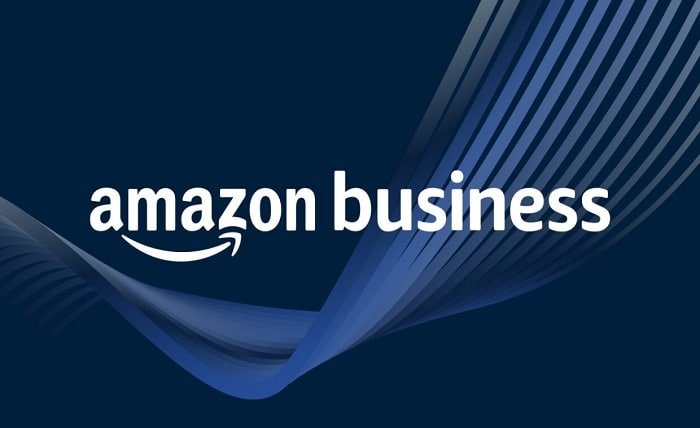How to Build and Scale a Successful Amazon Business: A Comprehensive Guide

The rise of e-commerce has transformed the way businesses operate, and Amazon, as one of the world’s largest online marketplaces, has become a prime platform for entrepreneurs looking to make their mark in the digital economy. Building an Amazon business allows individuals to tap into a global market, reach millions of customers, and scale a profitable venture with relatively low upfront investment. Whether you are an aspiring entrepreneur or a seasoned seller, understanding how to navigate and succeed in the world of Amazon business is essential.
In this blog post, we will explore how to start, grow, and optimize your Amazon business, along with practical tips, best practices, and strategies that can help you stand out in the competitive e-commerce landscape.
What Is an Amazon Business?
An Amazon business refers to a commercial venture where individuals or companies sell products on Amazon’s platform, either through their own brand or by reselling existing products. Sellers can access Amazon’s vast marketplace to reach customers worldwide, handling everything from product sourcing to customer service and fulfillment.
There are several ways to run an Amazon business, including:
- Selling Private Label Products:
Entrepreneurs source products from manufacturers, put their own brand name on them, and sell them on Amazon. - Retail Arbitrage:
Sellers buy products at a lower price from retailers and resell them for a profit on Amazon. - Wholesale Business:
Sellers purchase products in bulk from wholesalers or manufacturers and sell them individually on Amazon. - Dropshipping:
Sellers list products they don’t own or store, and when a customer buys, the supplier ships directly to the buyer.
Each model has its own set of benefits and challenges, but they all offer the opportunity to leverage Amazon’s marketplace to create a profitable business.
Setting Up Your Amazon Business: Step-by-Step Guide
To establish a successful Amazon business, it’s important to follow a structured approach. Below is a step-by-step guide to get started:
- Choose Your Niche: The first step is deciding what products you will sell. You can choose a niche based on your passion, knowledge, or research into market demand. Make sure your products have a clear target audience.
- Create an Amazon Seller Account: Setting up your Amazon business begins with registering for a seller account. Amazon offers two types of accounts: Individual and Professional. If you plan to sell more than 40 items per month, the Professional account is more cost-effective.
- Find Your Product Suppliers: Depending on your business model, source products either through wholesalers, dropshipping suppliers, or by creating private label products. Use platforms like Alibaba, trade shows, or local manufacturers to find reliable suppliers.
- List Your Products: Once you have sourced your products, create product listings on Amazon. Ensure that your listings are optimized with clear titles, descriptions, high-quality images, and keywords.
- Set Your Price: Pricing plays a crucial role in the success of your Amazon business. Research the prices of similar products on Amazon to ensure you are competitive while factoring in costs such as shipping and Amazon fees.
- Fulfillment Options: Decide whether you will fulfill orders yourself (Fulfillment by Merchant, FBM) or use Amazon’s Fulfillment by Amazon (FBA) service. FBA offers several benefits, including fast shipping, Amazon Prime eligibility, and customer service handling.
- Launch Your Products: After your listings are live, use various marketing techniques, such as Amazon ads, social media promotions, and influencer collaborations, to drive traffic to your product pages and increase sales.
Marketing Your Amazon Business: How to Get Found
One of the key challenges in running an Amazon business is standing out from the competition. Fortunately, there are several ways you can market your products effectively on Amazon:
- Amazon Sponsored Ads:
Use Amazon’s advertising tools to create targeted ads for your products. Sponsored Products, Sponsored Brands, and Sponsored Display ads can help increase visibility and drive traffic to your listings. - Optimize Product Listings for SEO:
Amazon’s search engine algorithm, A9, ranks listings based on relevance and sales performance. Optimize your listings by including high-volume keywords, compelling product descriptions, and strong customer reviews. - Social Media and Influencer Marketing:
Use platforms like Instagram, Facebook, and YouTube to promote your products. Partnering with influencers in your niche can give your Amazon business a huge boost by reaching a wider audience. - Email Marketing:
Build an email list to stay connected with your customers and provide them with valuable content, promotions, and product updates. Email marketing is a great way to foster repeat business. - Leverage Amazon’s Brand Registry:
If you have your own private label products, enrolling in Amazon Brand Registry allows you to protect your brand and access additional marketing tools like Enhanced Brand Content (EBC).
Growing and Scaling Your Amazon Business
Once your Amazon business is up and running, the next step is growth. Scaling your business requires strategic planning and continuous optimization. Here are a few tips on how to scale your Amazon business successfully:
- Expand Your Product Range:
As your business grows, consider expanding your product range within your niche or branching out into related categories. This can increase your sales and provide more value to your customers. - Optimize Your Supply Chain:
To scale efficiently, focus on optimizing your supply chain. Consider working with multiple suppliers, using Amazon FBA for faster shipping, and managing inventory to avoid stockouts. - Focus on Customer Service:
Providing excellent customer service can lead to positive reviews and increased sales. Respond quickly to customer inquiries, handle returns efficiently, and ensure timely shipping. - Automate Operations:
Automating aspects of your Amazon business can free up your time and improve efficiency. Use software tools for inventory management, pricing adjustments, and order processing to streamline operations. - Expand to Global Markets:
Amazon operates in many countries, so consider expanding your reach by selling in international markets. This allows you to tap into new customer bases and grow your revenue streams.
Managing Finances in Your Amazon Business
Financial management is crucial to the success of your Amazon business. From managing cash flow to tracking expenses, here are some tips to keep your finances in order:
- Track Your Profit Margins:
Ensure that your products are priced to cover costs such as Amazon fees, shipping, and marketing expenses. Calculate your profit margin and monitor it regularly to ensure profitability. - Use Accounting Software:
Using accounting tools like QuickBooks or Xero can help you track your income and expenses. These tools can generate reports and make tax filing easier. - Reinvest in Your Business:
To scale, consider reinvesting a portion of your profits into marketing, product development, and expanding your inventory. Smart reinvestment will pay off in the long run. - Manage Cash Flow:
Cash flow is critical in any business, so ensure that you have enough funds to cover operational costs. Monitor your accounts regularly and maintain a financial cushion for unforeseen expenses.
Legal and Tax Considerations for Your Amazon Business
When running an Amazon business, it’s essential to stay compliant with legal and tax requirements. Here are some considerations to keep in mind:
- Register Your Business:
Depending on where you are located, you may need to register your business as a sole proprietorship, LLC, or corporation. Check with local authorities for the appropriate steps. - Paying Taxes:
As an Amazon seller, you are responsible for paying sales tax, income tax, and possibly other local taxes. Make sure to keep accurate records of all your sales and expenses. - Adhere to Amazon’s Policies:
Familiarize yourself with Amazon’s seller policies, including those related to product listings, returns, and intellectual property rights. Violating these policies can result in account suspension. - Protect Your Brand and Products:
If you’re selling private label products, consider trademarking your brand. You should also be aware of patent and copyright laws to protect your intellectual property.
Conclusion
Building a successful Amazon business is an exciting and rewarding venture. With the right strategies, dedication, and a focus on continuous improvement, you can create a sustainable business that generates significant revenue. From setting up your account to scaling and marketing your products, there are numerous opportunities to succeed on Amazon. Whether you’re just starting or looking to optimize your existing business, this guide has provided valuable insights to help you on your journey.
FAQs
- How do I start an Amazon business?
To start an Amazon business, sign up for a seller account, choose a product niche, find suppliers, create product listings, and start marketing your products. - What are the best ways to grow an Amazon business?
Focus on expanding your product range, automating operations, optimizing your supply chain, and providing excellent customer service to scale your business. - How do I make money on Amazon?
You can make money by selling products through retail arbitrage, wholesale, dropshipping, or private label businesses on Amazon’s marketplace. - What fees does Amazon charge for selling on their platform?
Amazon charges various fees, including a referral fee, closing fee, and fulfillment fees if you use Amazon FBA. These fees vary based on your product category. - Can I sell internationally on Amazon?
Yes, Amazon allows you to sell in international marketplaces, expanding your business to reach customers around the world.



